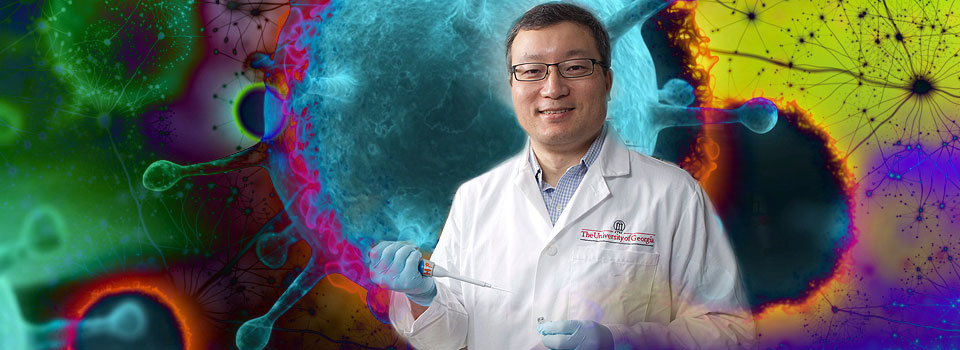Flu is unpredictable. Influenza viruses are changing constantly-from one season to the next or even within the course of a flu season-making vaccine development difficult.
Annual flu vaccines are designed to build immunity to the three most common strains of the virus. New research from the College of Veterinary Medicine recently published in the Journal of Virology suggests an improvement to the current model.
“Influenza viruses change their surface proteins for various reasons and by various means,” said the study’s lead author Biao He, a professor of infectious diseases. “As a result, we need an annual vaccination to match the circulating strains.”
Current flu vaccines target surface proteins to develop resistance. He’s vaccine targets an internal viral protein, called a nucleoprotein, which is critical for virus replication. Because it doesn’t change as readily as the surface proteins, it’s a great target for a vaccine, He said.
Previous attempts to target nucleoprotein for protection were not effective. Using a vector process developed in He’s lab that uses the common canine virus parainfluenza virus 5, or PIV5, his research showed for the first time that a single dose of immunization protected a mouse model against both H1N1 and H5N1, two different subtypes of influenza A virus. PIV5 is a virus that causes respiratory infection in dogs. Using PIV5 as a delivery mechanism to expose humans and other animals to antigens of important pathogens-influenza in this case-allows them to create vaccines that will protect against future infections in humans and animals.
“This finding suggests flu vaccines can protect against multiple strains, thus fewer flu vaccinations will be necessary,” said He, who also is a Georgia Research Alliance Distinguished Investigator and member of the Faculty of Infectious Diseases.
According to the Centers for Disease Control and Prevention, flu vaccines in 2012-2013 were 47 percent effective against influenza A, or H3N2, and 67 percent effective against influenza B. The effectiveness of each year’s vaccine depends on how accurately research predicts the circulating strains, how much vaccine is available and how many people are vaccinated.
Current vaccines use weakened or dead flu viruses grown in eggs to build antibodies in people. Some vaccine strains grown in eggs, like the H3N2 virus, don’t grow well, so it is difficult to produce an effective vaccine in a needed quantity.
The virus used as a vector in He’s vaccine, PIV5, has been used as a component for kennel cough vaccines and already is being mass produced from cell cultures, avoiding dependence on eggs for vaccine production.
The newly developed vaccine was 100 percent effective in protecting against H1N1 and more than 60 percent effective in protection against the most virulent strain H5N1 when tested in the mouse model.
Taking this technology from the lab to physicians will require further testing and could take five to 10 years, if everything goes well.


